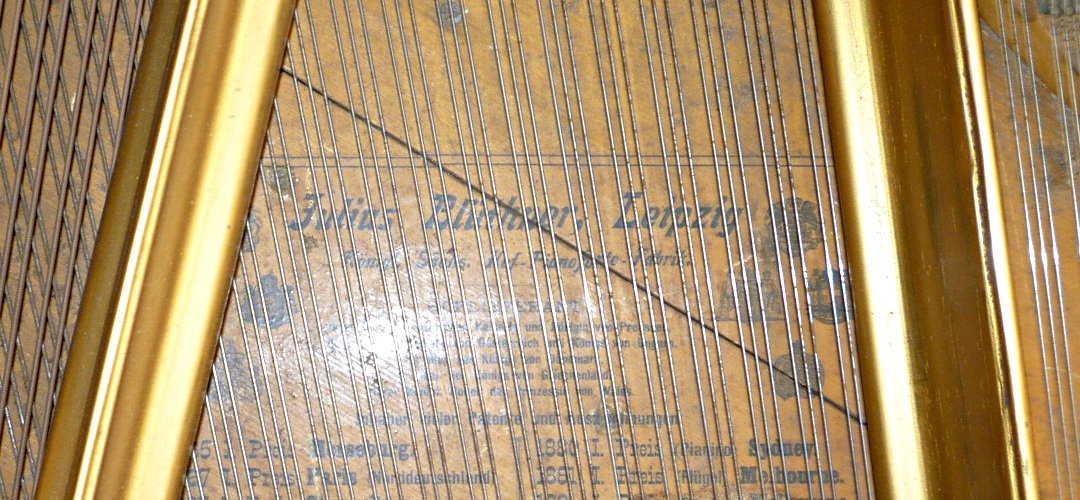The large sounding wooden surface in the piano under the strings is most prone to cracking. Soundboards are made of glued spruce boards and shrink when humidity is too low below 50%, so that cracks can form.
Cracks in the soundboard can cause the manufacturer's intended curvature of the soundboard and thus the bridge pressure to decrease. The volume and purity of the sound will be reduced and there may be ambient noise (clanking, etc.).
Older pianos often have cracks in the soundboard due to phases of excessively dry room air and can still sound very beautiful. However, this must be taken into account in the current value of the instrument. Cracks are generally more critical than just one-sided openings or hairline cracks with dust deposits that run in the grain of the wood. Cracks under bridges are generally more critical.
In the course of an acoustic renovation, a soundboard that already has cracks is usually deliberately heavily dried to provoke further crack formation and repaired with chips. The floor is then sanded, bleached if necessary and resealed with shellac or similar. A soundboard renovated in this way should also be able to withstand shorter periods of slightly too dry room air. If the air humidity is too low over a longer period of time, even a renovated soundboard will not remain undamaged.

